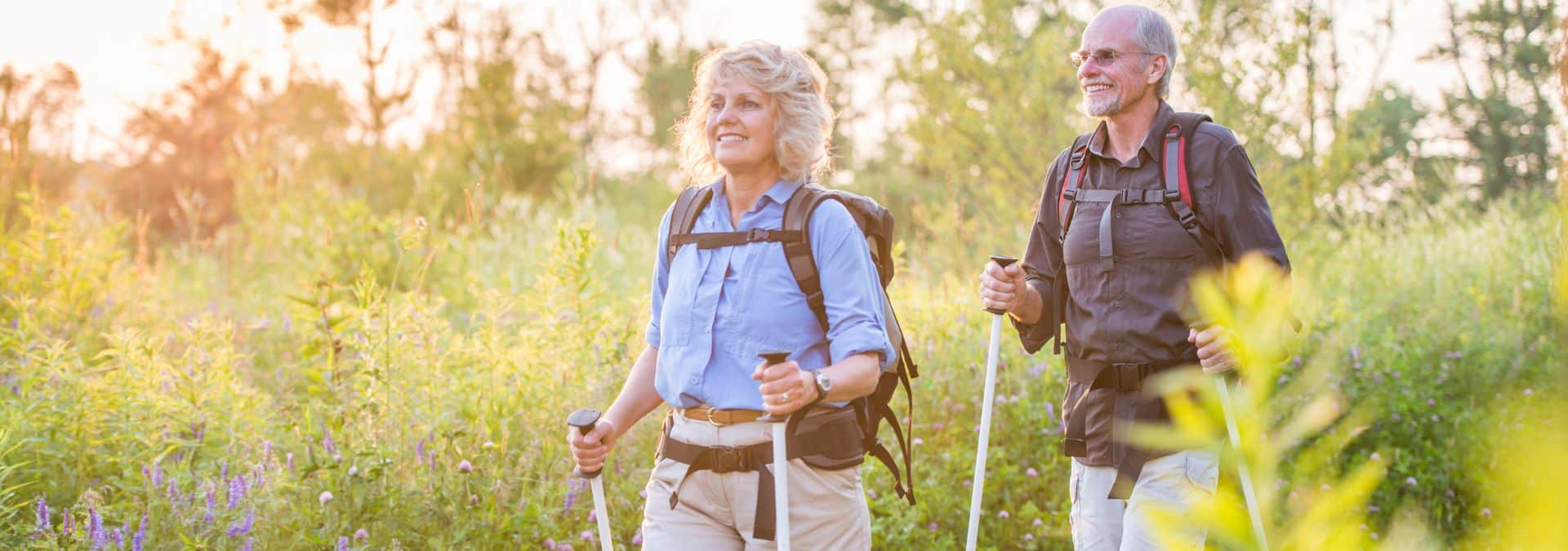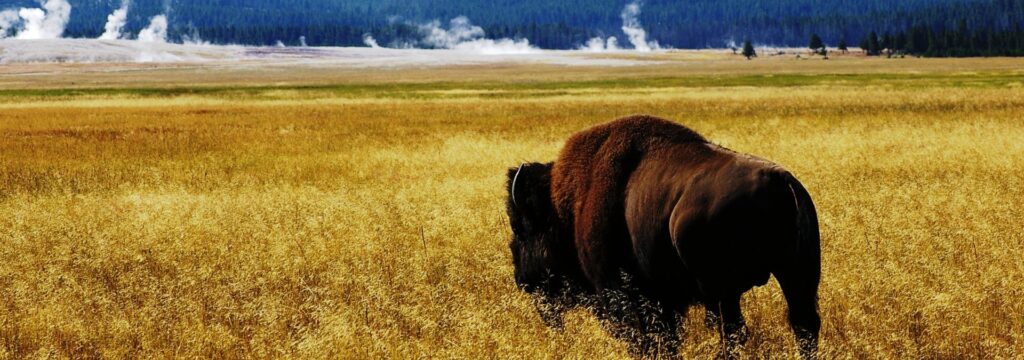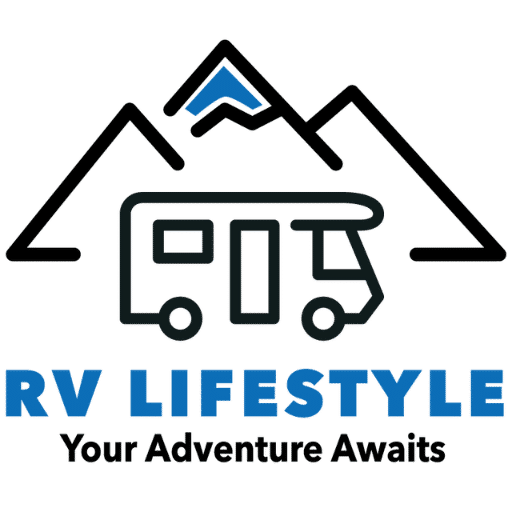Hiking Etiquette? 7 Unwritten Rules of the Trail

Who has the right of way when hiking? We discuss that rule and more hiking etiquette that every hiker should know…
Hiking is a great way to enjoy the great outdoors, connect with nature, and get some fresh air. But just like any other activity, there are certain rules and etiquette that hikers should follow.
In this article, we will discuss the important unwritten rules of hiking etiquette that every hiker should be aware of. Plus, offer some hiking safety tips.
Of course, different trails may have different rules. So, be sure to always follow the posted rules of the trail wherever you travel.
If you buy something through our links, we may get a small commission at no extra cost to you. It helps keep our lights on so we can continue to provide helpful resources for RVers. Read our full affiliate disclosure here.
Rule #1: Stay on Designated Trails

One of the most important rules of hiking etiquette is to stay on designated trails. Straying off-trail can damage plant life, disturb wildlife habitats, and cause erosion. Not to mention it can get you lost, injured, or killed.
Many hiking trails have clear markers such as signs, blazes, or cairns to help guide hikers on the right path. It's essential to pay attention to these markers and stick to the established hiking trail to minimize your impact on the surrounding environment.
Since trail blazes and rock cairns are often used to mark trails, it's imperative that you don't make any of your own! That includes stacking rocks or leaving painted rocks on the trail.
Leaving your own marks or building rock structures on the trail puts other hikers in danger! Read DON’T Do These 10 Things in a National Park. Plus, it violated the Leave No Trace principle…
Rule #2: Leave No Trace

The Leave No Trace principle promotes responsible outdoor practices to minimize human impact on the environment. As a hiker, it's crucial to follow these principles to preserve the natural beauty and balanced ecosystem of hiking trails.
Some Leave No Trace practices include carrying out all trash, properly disposing of human and pet waste, and avoiding leaving behind any trace of your presence on the trail. That includes natural and biodegradable items!
You should not leave banana peels, for instance, even though they're natural and biodegradable. The goal is to leave the trail exactly as you found it!
Rule #3: Know Who Has the Right of Way
Just like roads, hiking trails have right-of-way rules that you should follow. Rules can vary at different parks but, in general rule, hikers have the right of way over mountain bikers but should yield to horseback riders.
When encountering other hikers on the trail, downhill hikers should yield to uphill hikers, as they are working harder to climb the trail. On that same note, slower hikers should yield to faster hikers.
Additionally, when hiking in large groups, it's best to hike in single file to allow other trail users to pass. Even smaller groups should adhere by this practice.
Rule #4: Keep Noise to a Minimum
When hiking, it's common courtesy to keep noise to a minimum by talking softly and refraining from playing music. Loud noises can disrupt wildlife and disturb fellow hikers seeking a quiet and tranquil hiking experience.
You can use headphones or earbuds, but never turn the volume so high that you can't hear your surroundings. You must be able to hear other hikers, cyclists, or wildlife approaching!
Rule #5: Be Mindful of Wildlife

Encountering wildlife is one of the joys of hiking, but it's important to remember that these animals are wild and should be respected from a safe distance. When encountering wildlife, it's best to observe from a distance. Do not approach or feed them.
If you spot a bear or mountain lion, maintain a calm demeanor, make yourself look larger, and slowly back away. It's important never to run or make sudden movements that may provoke the animal.
Here are some additional resources to help prepare you for animal encounters:
- Bear Attack! (5 Bear Safety Resources for RVers)
- 5 Basic Snake Safety Tips Every RVers Needs to Know
- How to Keep Ticks Off Dogs & Out of Your RV
Rule #6: Be Prepared

Being prepared is an important part of hiking etiquette. You don't want to be the guy asking other campers for help because you didn't prepare.
(Of course, you absolutely SHOULD ask for help if you need it, but it's best not to need it in the first place!)
Before heading out on a hike, make sure to research the trail conditions and pack accordingly. Carry essential items such as water, snacks, appropriate clothing, navigation tools, a first aid kit, and any necessary medications.
You should always let someone know your hiking plans and when you expect to return, especially if you are hiking alone. Leave your plan with a responsible family member or friend or with the local trail authority.
Rule #7: Prioritize Safety

Prioritizing safety is paramount when hiking. Being prepared is the first step, but here are more hiking safety tips that every hiker should follow…
Hiking Safety Tips
- Stay hydrated and pack enough water for your hike, especially in hot weather.
- Wear appropriate clothing and footwear for the terrain and weather conditions.
- Keep small children in front of or between adults. Never let kids hike at the back of the pack.
- Stay on durable surfaces to avoid damaging sensitive plant life and ecosystems.
- Watch for sudden weather changes, and be prepared with rain gear.
- Be cautious of steep or slippery areas, and use trekking poles for stability if needed.
- Avoid hiking alone, but if you choose to do so, inform someone of your plans and expected return time.
- Even when not hiking alone, you should always leave your hiking plan with a family member, friend, or local trail authority.
- Carry emergency essentials such as a first aid kit, whistle, flashlight, and extra food.
- Be cautious of wildlife encounters; familiarize yourself with the behavior of local wildlife and give them ample space.
- Do not rely solely on electronic devices for navigation; bring a map and compass as a backup.
- Stay aware of your own limitations and those of your hiking group to ensure a safe and enjoyable hike.
More Unwritten Rules…
Like what you see in these videos? We'd appreciate it if you would Subscribe to our YouTube Channel (easy to do right here) and consider “ringing the bell icon” to be notified of any new video from us. 🙂 Thanks!
Now that we've covered basic hiking etiquette, we recommend checking out more unwritten rules RVers should know:
- DON’T Do These 10 Things in a National Park
- UNWRITTEN RULES of Boondocking in Nature
- 7 UNWRITTEN Rules of Camping with a Dog
- Be the GOOD Camping Neighbor! 15 UNWRITTEN Rules…
- 7 Unwritten Rules for RV Parking Overnight at Truck Stops
- 7 UNWRITTEN RULES of Pulling a 5th Wheel or Travel Trailer
Mike and Jennifer Wendland's Yellowstone Travel Guide

At the top of every RVers bucket list, it is a place so majestic, so wild, and so big that it calls us to return, to explore, to get to know the diversity of its land and animals over and over again.
Everywhere you look are waterfalls, fast-moving rivers, geysers, sheer rock faces, towering lodgepole pines, all framed by mountains under the bright blue cloudless sky.
It’s spectacular for those who love the wilderness and getting up close and personal with it. Enjoy Yellowstone for RV travel.
You can see ALL our eBooks here, or use the following Quick Links to go straight to what you need!
● Adirondacks ● Arizona ● Colorado ● Coastal Maine ● Florida’s Atlantic Coast ● Florida’s Gulf Coast ● Florida Keys ● Great Lakes Shoreline ● Natchez Trace ● Southern Utah ● Upper Peninsula ● Lower Peninsula ● Yellowstone ● Bourbon Trail ● Yosemite
And MANY of these are BUNDLED together:
Northeast Bundle
Coastal Maine, Adirondacks
Ultimate Michigan and Great Lakes Bundle – 3 ebooks –
Upper Peninsula, Lower Peninsula, and the Great Lakes Tour
Michigan Bundle
Upper Peninsula, Lower Peninsula
The Great Lakes Adventure Guide Bundle
The Great Lake Shoreline Tour & JUST the Upper Peninsula Guide
Florida Adventure Guide Bundle
Gulf Coast, Atlantic Coast, Keys
Southwest Adventure Guide Bundle
Arizona, Colorado, Southern Utah)
Ultimate 7-Day RV Adventure Guide Bundle
Collection 1- our first 10 ebooks (does NOT contain Great Lakes Shoreline, Natchez Trace, The Bourbon Trail, and Yosemite)
We also have a nice collection of ebooks that will help you navigate the RV Lifestyle.
Like these:
RV Buying Secrets – The Beginner's Guide to Boondocking – The Ultimate Guide to Cheap or FREE RV Camping Sites – Boondocking and Free RV Camping EBOOK Bundle – Winter Camping – Newbie Guide
And ONE PRINT book 🙂 and yes, before you ask, we have plans for MANY more print books.
The Complete Guide to Boondocking – PRINT VERSION
This is the same as the ebook titled The Beginner's Guide to Boondocking but in print.
And while you are exploring all our ebooks – check out the hoodies, T-shirts, Stickers, and mugs in our MERCH Store! You can get to it directly by just going here – SHOP!

As to “Right of Way”, Horses have the right of way first, then bicyclists and then foot traffic. If you insist on the right of way as a hiker, you and the person on the horse could be injured, if you spook the horse. Be sensible and safe on the trail.
I’ve read the same thing about hiking “right of way”, but I think we should change it. When I’m hiking uphill and meet someone coming down, I stop and tell them to go ahead, I can use the break.
I’ve read a lot lately about tearing down “rock art”. It is best to leave it where you found it. If it seems confusing or not a trail marking cairn take note of where it is and tell a ranger. It sounds like some have been removing necessary trail markers (as at Arches NP) and occasionally culturally significant places in their zeal to be helpful.
4. Being as quiet is not a good idea where I am from and could get you killed. This is terrible advice in bear country.